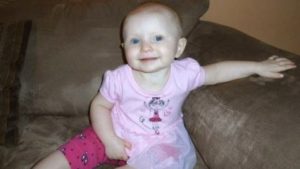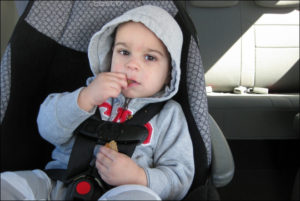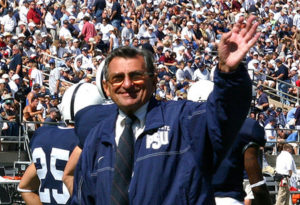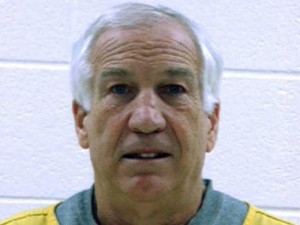I approach Thanksgiving with mixed feelings. On one hand it reminds me of the family that I no longer have and that makes me feel sad and self-pitying. Thanksgiving also means getting together with family, whatever that happens to mean, and engaging over a sumptuous feast and that makes me feel optimistic and hopeful about the future. However, I cannot shake the feeling that there are missing children who have been forgotten or dismissed by society who will not have an opportunity to break bread with their families this year and members of those families are at best complacent about this sad turn of affairs.
In Gilbert, Arizona the mother of five-year-old Jhessye Shockleyhas been arrested on child abuse charges ŌĆ£directly relatedŌĆØ to little Jhessye, and the authorities donŌĆÖt believe theyŌĆÖll find the child alive. This shouldnŌĆÖt come as a  surprise because the mother has already spent four-years in a penitentiary for child abuse. What is surprising is that she had custody of Jhessye, three of her siblings and was eight-months pregnant at the time of the little girlŌĆÖs disappearance. How could a racist spewing, child abusing ex-convict who was married to a registered sex offender gain control over a precious five-year-old girl who required nurturing and not torturing. Society failed to protect Jhessye from a monster.
surprise because the mother has already spent four-years in a penitentiary for child abuse. What is surprising is that she had custody of Jhessye, three of her siblings and was eight-months pregnant at the time of the little girlŌĆÖs disappearance. How could a racist spewing, child abusing ex-convict who was married to a registered sex offender gain control over a precious five-year-old girl who required nurturing and not torturing. Society failed to protect Jhessye from a monster.
We need to own this. We cannot allow unfit parents or guardians to regain custody of children in the aftermath of a history of abuse, criminal behavior and neglect. Our tax dollars pay the family judges, child protection services and other entities designed to protect children from those who would do them harm, yet they are nowhere to be found when they are needed most. ┬Ā
In Kansas City, Missouri the parents of baby Lisa Irwin have circled the wagons, shut out the authorities, and refused  to do media interviews because life isnŌĆÖt fair. Instead, they have chosen to allow a ŌĆśdefenseŌĆÖ attorney from New York orchestrate a sham campaign designed to complicate the truth. Now the case is losing momentum, the investigation seems stalled in its tracks, and hired guns are calling the shots. Baby Lisa deserves way more from her family.
to do media interviews because life isnŌĆÖt fair. Instead, they have chosen to allow a ŌĆśdefenseŌĆÖ attorney from New York orchestrate a sham campaign designed to complicate the truth. Now the case is losing momentum, the investigation seems stalled in its tracks, and hired guns are calling the shots. Baby Lisa deserves way more from her family.
I learned a long time ago that life is not fair. We donŌĆÖt get what we deserve and we cannot withdraw goodwill from a savings account. Sometimes we find ourselves thrust into situations that are beyond our control without the skill set required to respond effectively. Sometimes shit happensŌĆ”and just we have to deal with it. If the parents of the missing child are not publicly fighting for her return, then how motivated will the rest of us be? Baby LisaŌĆÖs parents have not owned their reality. They are not dealing with it, they are hiding from it. The bottom line is that Lisa has missed her first birthday and will not spend Thanksgiving with her family.
In Bellevue, Washington the mother of two-year-old Sky Metalwala is nowhere to be found. Remember that early on the morning of November 6, her car ran out of gas as she was taking her sick child to the hospital. So, she left the  toddler strapped in his car seat, left the car door unlocked and walked a mile with her four-year-old daughter to the nearest gas station. When she returned an hour later the little boy was missing, prompting a massive search effort that has thus far turned up nothing. Funny thing though: the car had plenty of fuel in the gas tank, and she did not return with a gas can. The little boy disappeared, or was reported missing four days after contentious divorce mediation. In 2010, mom was involuntarily committed to a mental health center after her husband claimed she had dreams about killing her children.┬ĀShe also has a profile on a ŌĆśsugar daddyŌĆÖ website where she is apparently offering herself to the highest bidder. In response SkyŌĆÖs mom has said that her husband was a “sadistic Muslim Pakistani” and no one had “any idea” how “difficult” the whole affair had been. Dad, who has attended a local Christian church since 2006, has fully cooperated with the authorities since day 1. Trouble is, he is not going to spend Thanksgiving with the little boy the courts refused to allow him to visit.
toddler strapped in his car seat, left the car door unlocked and walked a mile with her four-year-old daughter to the nearest gas station. When she returned an hour later the little boy was missing, prompting a massive search effort that has thus far turned up nothing. Funny thing though: the car had plenty of fuel in the gas tank, and she did not return with a gas can. The little boy disappeared, or was reported missing four days after contentious divorce mediation. In 2010, mom was involuntarily committed to a mental health center after her husband claimed she had dreams about killing her children.┬ĀShe also has a profile on a ŌĆśsugar daddyŌĆÖ website where she is apparently offering herself to the highest bidder. In response SkyŌĆÖs mom has said that her husband was a “sadistic Muslim Pakistani” and no one had “any idea” how “difficult” the whole affair had been. Dad, who has attended a local Christian church since 2006, has fully cooperated with the authorities since day 1. Trouble is, he is not going to spend Thanksgiving with the little boy the courts refused to allow him to visit.
Certain bio-moms and bio-dads seem to think that they can dispose of their children without consequence as long as they lawyer up and refuse to speak with the authorities. Why does SkyŌĆÖs mother feel that she can get away with this kind of criminal behavior? Because we live in a post Casey Anthony era where criminal behavior is condoned, excused or otherwise justified. Silence buys freedom and the U.S. Constitution buys cover. If you canŌĆÖt find the body, you canŌĆÖt prove the crime.┬Ā
In light of Penn State and Syracuse University allegations we need to pay more attention to our institutions. Not only institutions of higher learning, but also those whose job it is to protect children from abuse, neglect and abduction. The National Center for Missing and Exploited Children is the most high profile of those institutions. In fact the term exploited children is in their name, but what exactly are they doing to protect children who are clearly being exploited?
Are they writing legislation that will hold family judges accountable or make child protection services more responsive? Are they educating society to the danger signs of exploitation or abuse? As I see it, they are simply waiting until the ultimate abuse has occurred and posting pictures of children who are already dead or missing on their website? We owe it to our children to ask the hard questions and hold somebody accountable for this obvious social failure.
 abiding citizens of California were sick and tired of coddling career criminals. The result was a dramatic reduction in crime. Efforts by professional politicians to weaken the Three Strikes law have failed miserably. JessicaŌĆÖs Law (Prop. 83) passed by a similar margin in 2006, because Californians wanted greater monitoring of sex offenders and harsher prison sentences for child molesters.
abiding citizens of California were sick and tired of coddling career criminals. The result was a dramatic reduction in crime. Efforts by professional politicians to weaken the Three Strikes law have failed miserably. JessicaŌĆÖs Law (Prop. 83) passed by a similar margin in 2006, because Californians wanted greater monitoring of sex offenders and harsher prison sentences for child molesters. 




 surprise because the mother has already spent four-years in a penitentiary for child abuse. What is surprising is that she had custody of Jhessye, three of her siblings and was eight-months pregnant at the time of the little girlŌĆÖs disappearance. How could a racist spewing, child abusing ex-convict who was married to a registered sex offender gain control over a precious five-year-old girl who required nurturing and not torturing. Society failed to protect Jhessye from a monster.
surprise because the mother has already spent four-years in a penitentiary for child abuse. What is surprising is that she had custody of Jhessye, three of her siblings and was eight-months pregnant at the time of the little girlŌĆÖs disappearance. How could a racist spewing, child abusing ex-convict who was married to a registered sex offender gain control over a precious five-year-old girl who required nurturing and not torturing. Society failed to protect Jhessye from a monster. to do media interviews because life isnŌĆÖt fair. Instead, they have chosen to allow a ŌĆśdefenseŌĆÖ attorney from New York orchestrate a sham campaign designed to complicate the truth. Now the case is losing momentum, the investigation seems stalled in its tracks, and hired guns are calling the shots. Baby Lisa deserves way more from her family
to do media interviews because life isnŌĆÖt fair. Instead, they have chosen to allow a ŌĆśdefenseŌĆÖ attorney from New York orchestrate a sham campaign designed to complicate the truth. Now the case is losing momentum, the investigation seems stalled in its tracks, and hired guns are calling the shots. Baby Lisa deserves way more from her family toddler strapped in his car seat, left the car door unlocked and walked a mile with her four-year-old daughter to the nearest gas station. When she returned an hour later the little boy was missing, prompting a massive search effort that has thus far turned up nothing. Funny thing though: the car had plenty of fuel in the gas tank, and she did not return with a gas can. The little boy disappeared, or was reported missing four days after contentious divorce mediation. In 2010, mom
toddler strapped in his car seat, left the car door unlocked and walked a mile with her four-year-old daughter to the nearest gas station. When she returned an hour later the little boy was missing, prompting a massive search effort that has thus far turned up nothing. Funny thing though: the car had plenty of fuel in the gas tank, and she did not return with a gas can. The little boy disappeared, or was reported missing four days after contentious divorce mediation. In 2010, mom 
 that want to abuse and exploit our children will seek positions that will provide them with unsupervised access to children. We see it in the non-profit world, schools, pre-schools, churches, fraternal organizations and the athletic field. This is why President Clinton signed the Volunteers for Children Act of 1998. Now organizations and businesses dealing with children, elderly, and the disabled may use national fingerprint-based criminal history checks to screen out volunteers and employees with relevant criminal records. The Internet has provided a new virtual playground that needs to be the topic of its own story.
that want to abuse and exploit our children will seek positions that will provide them with unsupervised access to children. We see it in the non-profit world, schools, pre-schools, churches, fraternal organizations and the athletic field. This is why President Clinton signed the Volunteers for Children Act of 1998. Now organizations and businesses dealing with children, elderly, and the disabled may use national fingerprint-based criminal history checks to screen out volunteers and employees with relevant criminal records. The Internet has provided a new virtual playground that needs to be the topic of its own story.

 Perhaps most importantly for those concerned with missing persons, ClarityŌĆÖs proposal includes a Public Safety and Alert channel that will allow truckers to receive news flashes, special reports, and full-length programming about unresolved missing person cases from local television stations, national cable and satellite channels, and Clarity channels. And in addition to high-profile cases, the service will also feature lower-profile cases that may have failed to receive media attention, including missing adults excluded by their age from the Amber Alert system.
Perhaps most importantly for those concerned with missing persons, ClarityŌĆÖs proposal includes a Public Safety and Alert channel that will allow truckers to receive news flashes, special reports, and full-length programming about unresolved missing person cases from local television stations, national cable and satellite channels, and Clarity channels. And in addition to high-profile cases, the service will also feature lower-profile cases that may have failed to receive media attention, including missing adults excluded by their age from the Amber Alert system.